Japanese Knotweed
Information
Polygonum cuspidatum - Polygonaceae Family - Perennial
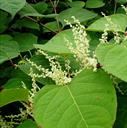
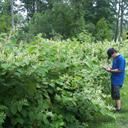
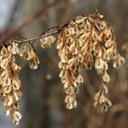
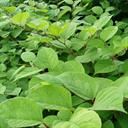
Identification
- Flowers: Flowers are tiny, greenish-white in color with 5 petals. They grow in large bundles of 8-1- that resemble stems.
- Seeds: Fruits are winged on three sides; seeds are triangular, dark brown, shiny and about 0.1 inches long.
- Leaves: Leaves are variable; about 6 in. long by 3-4 in. wide, broadly oval to somewhat triangular with a truncated base and a tapered tip.
- Flowering Time: Flowers in late summer into the fall.
- Life cycle: Japanese Knotweed is a perennial that completes the majority of its growth from early summer through late fall. It flowers in late summer, producing seed shortly after. It dies back at the first winter frost, only re sprouting the following spring.
Impacts
- Japanese Knotweed infestations in riparian areas increase flood risk by impeding water flow and creating an excess of debris in stream and river channels.
- Knotweed grows extremely quickly and easily shades out many native species, reducing floral biodiversity.
- Many native aquatic insects and amphibians only reluctantly feed on Japanese Knotweed, resulting in a decrease in their populations in infested areas.
Control
Most effective control methods
- Local infestations can be controlled through manual pulling, although care must be taken to remove the entire rhizomatous root system. Continual mowing can also be effective in controlling population size.
- There is currently no biological control agent approved for use against Japanese Knotweed in the US, although several insect species are being researched.
- Chemical control can be effective, but proper treatment depends on location and stage of growth. Check with your local weeds supervisor for questions about your infestation.
Large Images
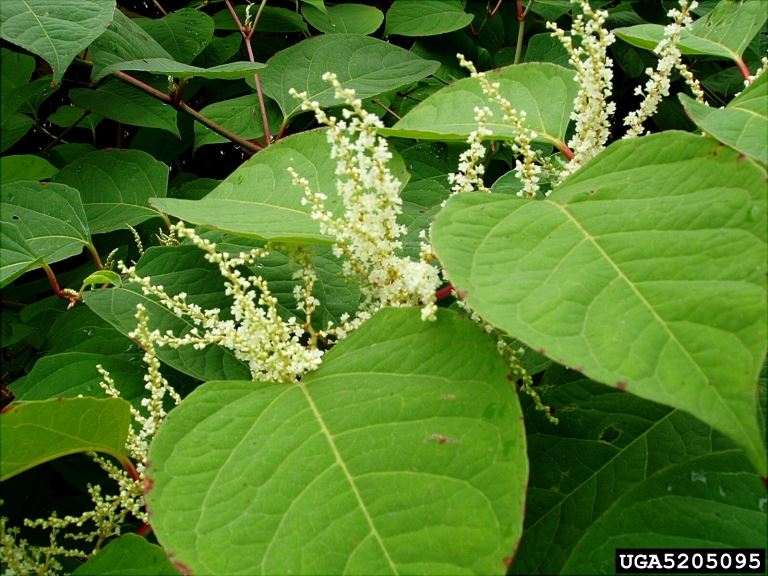
Japanese knotweed: flowers and foliage
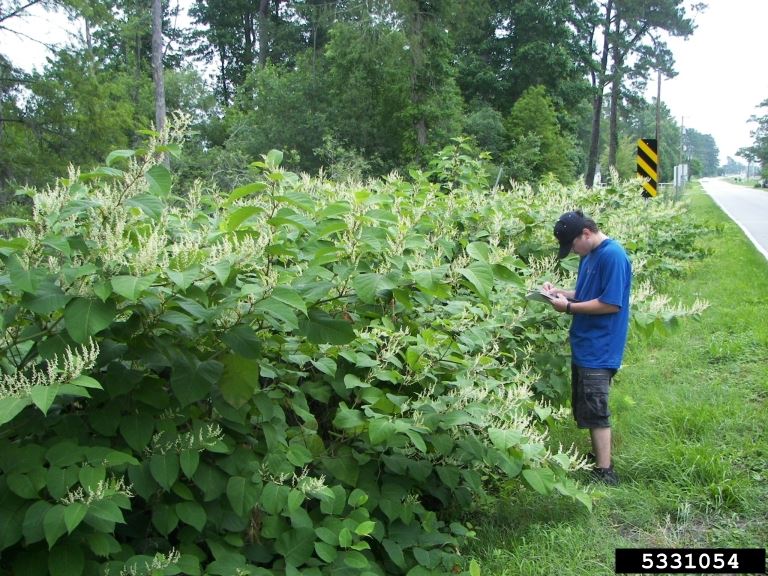
Japanese knotweed: infestation
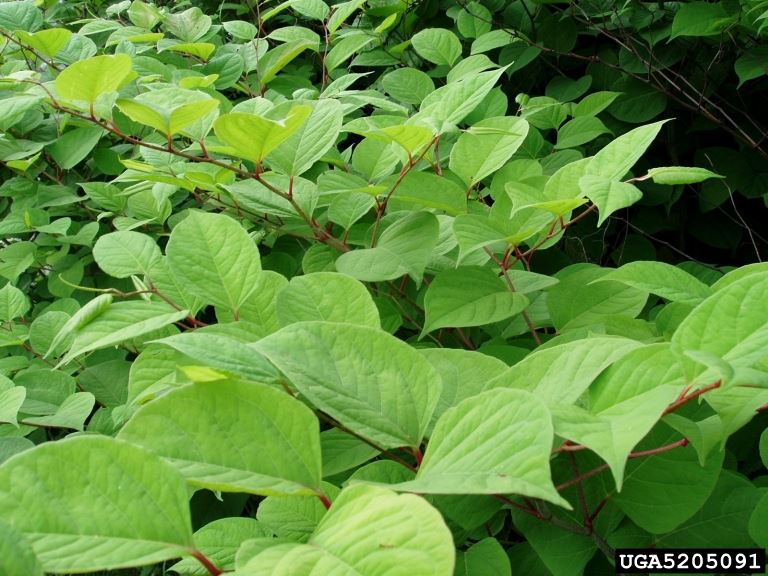
Japanese knotweed: foliage
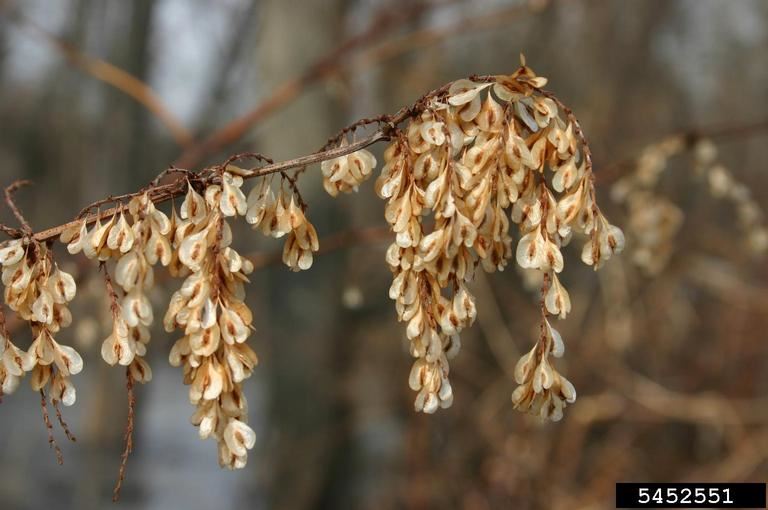
Japanese knotweed: seeds
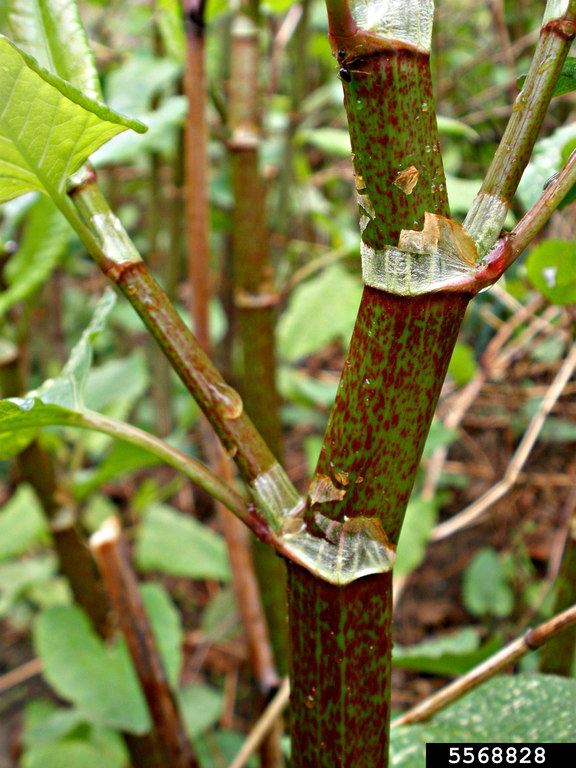
Japanese knotweed: stem
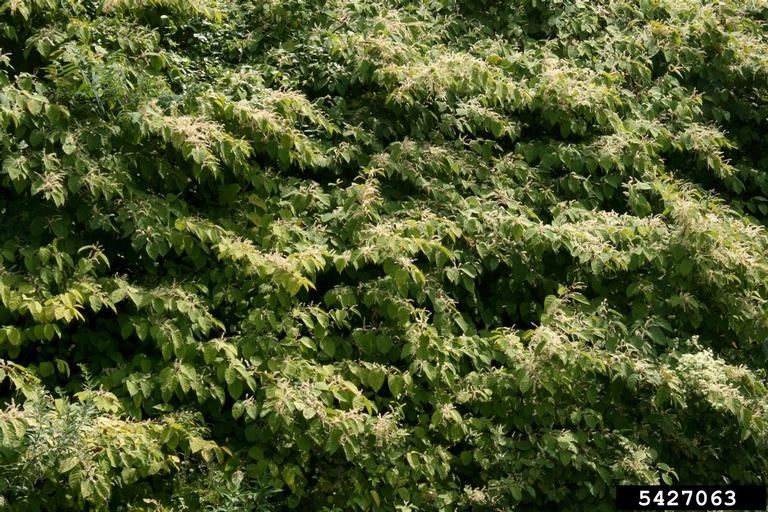
Japanese knotweed: infestation
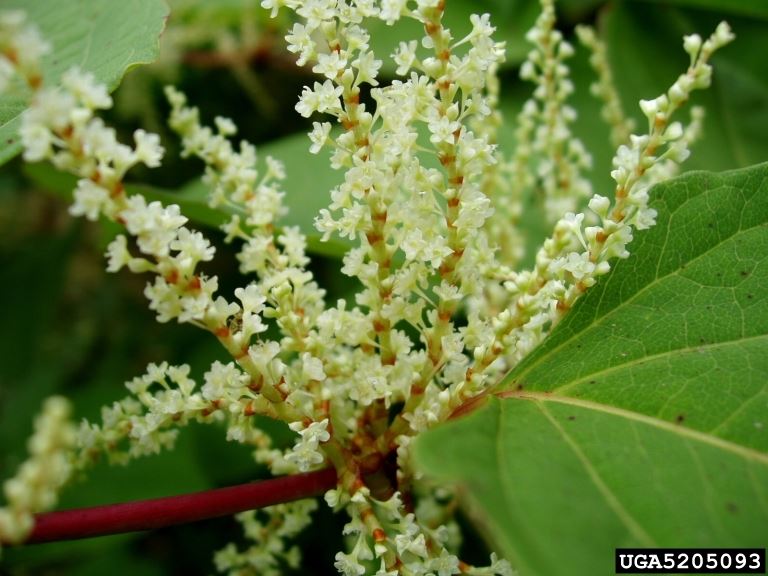
Japanese knotweed: flowers
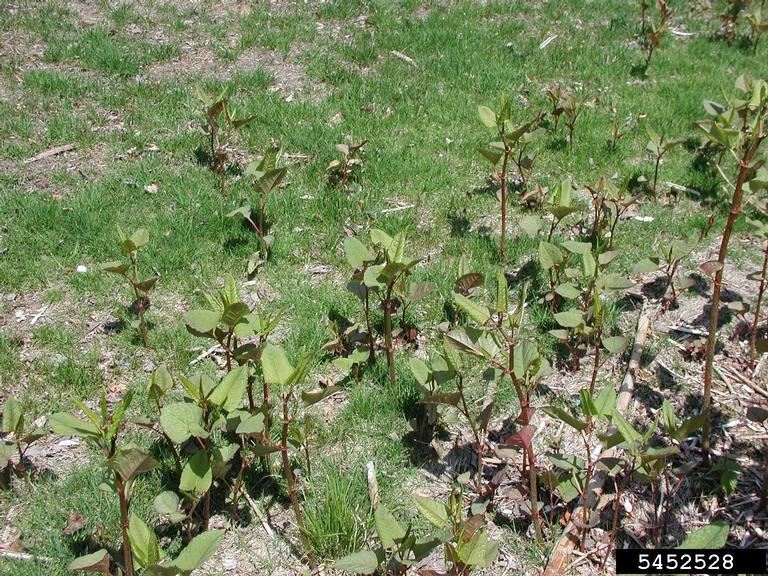
Japanese knotweed: seedlings
Resources
-
References
Beaulieu, D. (18, July 24). How to get rid of Japanese knotweed. Retrieved from https://www.thespruce.com/eradication-of-japanese-knotweed-plants-2131201
Duncan, C. (2017, November). Identification and management of invasive knotweeds. Retrieved from https://www.techlinenews.com/articles/2013/identification-and-management-of-invasive-knotweeds
Gover, A., Johnson, J., & Sellmer, J. (2007). Managing Japanese Knotweed [PDF file]. Retrieved from https://www.nrcs.usda.gov/Internet/FSE_DOCUMENTS/nrcs142p2_017951.pdf View PDF
Invasive Species Compendium. (2018, July 15). Fallopia japonica (Japanese knotweed). Retrieved from https://www.cabi.org/isc/datasheet/23875
Natural Resources Conservation Service. (2007). Pest management – Invasive plant control: Japanese knotweed [PDF file]. Retrieved from https://efotg.sc.egov.usda.gov/references/public/mn/797japaneseknotweed.pdf View PDF
Soll, J. (2004, January 16). Controlling knotweed in the Pacific Northwest [PDF file]. Retrieved from https://www.invasive.org/gist/moredocs/polspp01.pdf View PDF
Swansea University. (2018, April 25). Scientists lead the way in tackling Japanese knotweed. Retrieved from https://phys.org/news/2018-04-scientists-tackling-japanese-knotweed.html




